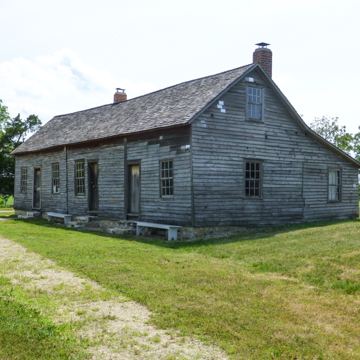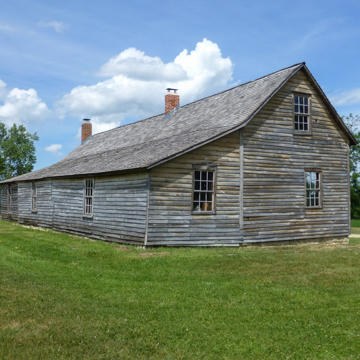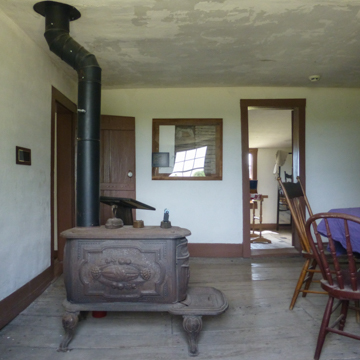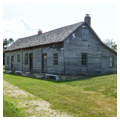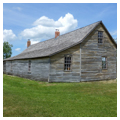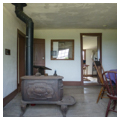The Hollenberg Pony Express Station is a way station at the place on the Oregon Trail where the access trails from the Missouri towns of Independence and St. Joseph converge before heading west through Nebraska and on to Oregon. Erected in 1857 and 1858 by Gerat Henry Hollenberg and his wife Sophia Brockmeyer, the station was a place where travelers on the Oregon–California trail could stop for a meal, a night’s accommodation, or to buy provisions or draft animals. The walnut-clad building began as a single-room log cabin but was gradually expanded to include six rooms. Four of these rooms housed the Hollenberg family, one was used as a store and another as a tavern. A loft running the full length of the house was used as a sleeping area for visitors. The Hollenberg facility also included a blacksmith’s shop and a large barn. Gerat farmed and tended to the livestock, while his wife attended to the visitors.
A German native, Gerat prospected for gold in South America, Australia, and California before settling in the Kansas in 1854. He set up a trading post at the point where the Oregon Trail crossed the Black Vermillion River. After a few years, he moved his enterprise west so that he could serve travelers joining the trail from both its eastern termini.
The Oregon Trail was first used by fur trappers as early as 1810, but was widened in 1841 to accommodate wagons. Traffic on the trail accelerated rapidly after the discovery of gold in California in 1848. When the firm Russell, Majors and Waddell founded the Pony Express, a rapid mail service between Missouri and California, they established 157 way stations along the route to accommodate their 400 horses and 125 riders. These way stations were located between ten and fifteen miles apart. Every third station, called a home station, provided facilities for riders to rest. The Pony Express contracted with the Hollenbergs to provide one of these home stations.
In April 1860 Pony Express riders made their first trips between St. Joseph, Missouri, and Sacramento, California. They were able to make the trip in ten days, half the time it took stagecoaches to cover the route. The courage of the young riders, who faced catastrophic weather and Indian hostility, quickly became legendary. As the myths of the hard-won successes of the Pony Express spread, so did the reach of the telegraph lines, and gradually the Pony Express route was shortened. In October 1861 telegraph lines reached California, and only a year and a half after it had begun, the Pony Express ceased operations.
In 1869 the railroads began providing cross-country service, and traffic on the Oregon Trail gradually diminished and way stations along the trail were abandoned. The Hollenbergs continued to farm their land until Gerat’s death in 1874, when new farmers took over the property. In 1941, realizing that the Hollenberg station was one of the few remaining Pony Express stations, the State of Kansas acquired the buildings and seven acres of the original Hollenberg farm. Restoration efforts began in 1963, after the property was given to the State Historical Society. In 1966 the site was named a National Historic Landmark as the last remaining Pony Express home station. A visitors’ center was built on the next hill over from the Hollenberg’s residence, which is now open to the public.
References
Lissandrello, Stephen, “Hollenberg Pony Express Station,” Washington County, Kansas. National Register of Historic Places Inventory-Nomination Form, 1961. National Park Service, U.S. Department of the Interior, Washington, D.C.














